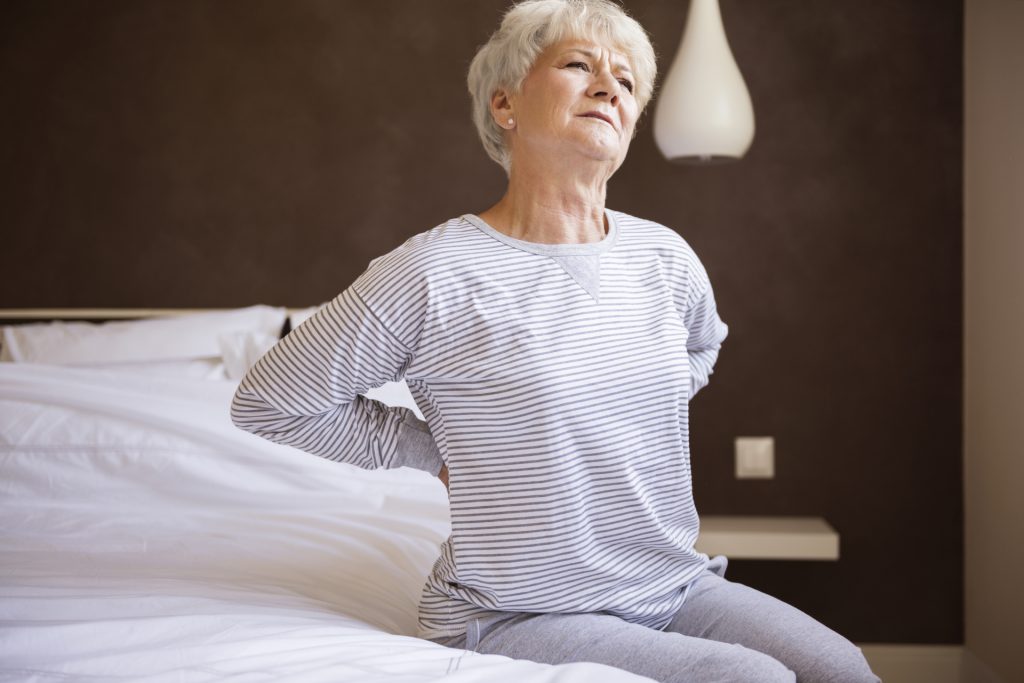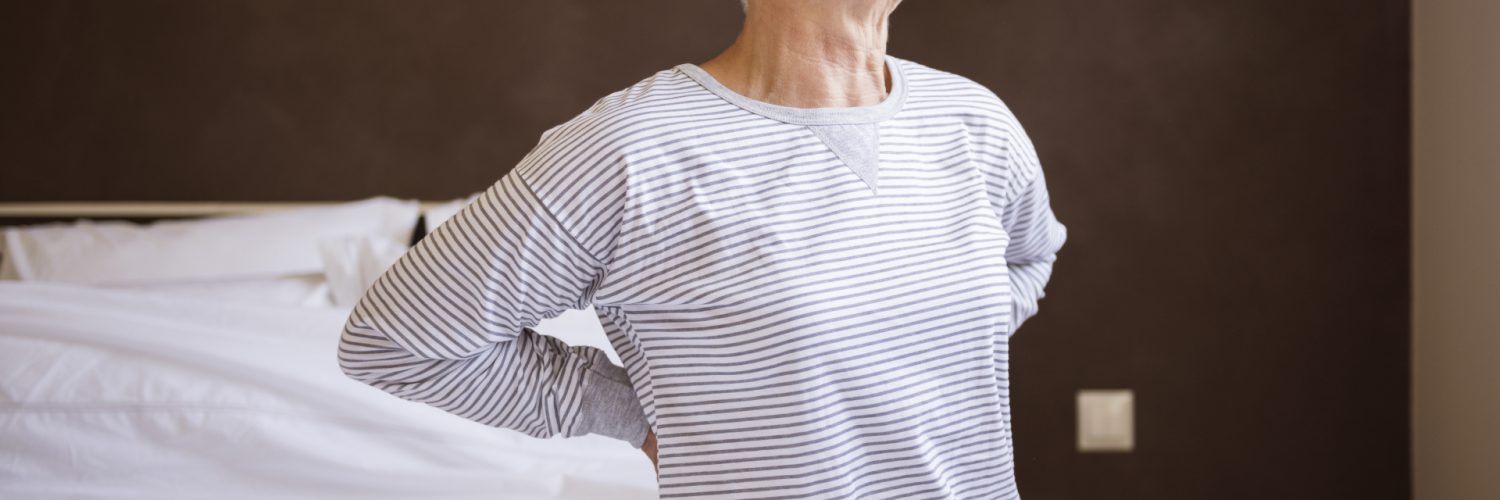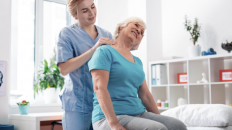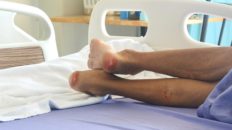When Dr Patrycja Mrozek, at the Department of Physiotherapy, Medical University of Łódź, began researching the effects of vibration on pain in the lumbosacral spine, there was nothing to predict the surprising discoveries that would take place in the small laboratory of the Department of Physiotherapy Didactics at the Medical University of Łódź. The patients selected for the study, aged between 33 and 85 years, turned up at the appointed time. Each with back pain, some with chronic pain and hoping that the vibration therapy sessions that were about to begin would bring at least temporary pain relief.
A medical experiment conducted in 2010 proved to be a milestone in research into the use of medical vibration therapy for the treatment of back, joint and muscle pain. Ten therapy sessions reduced the intensity of pain in the subjects by 87% !
Faculties of Physiology, Rehabilitation and Cosmetology at the Krakow University of Physical Education, becoming a world leader in medical vibration therapy research.
In another study, conducted at the Academy of Physical Education in Kraków, a team led by Professor Tomasz Pałka investigated the effect of Vitberg vibration therapy, on sacro-lumbar back pain. The study was conducted in Vitberg outpatient clinics throughout Poland.The experiment involved 4278 people over the age of 40. After 5 days of one-hour vibration therapies in the spinal area, as many as 2396 people noticed a significant reduction in pain in this area. A success rate of 56 per cent is more than adequate, especially as this therapy can be used by everyone, also at home.

If you want to slim down effectively, try vibration training. You will be surprised by the results.
At the same university, another team of researchers, led by Professor Wanda Pilch, conducted a number of studies on the use of vibration therapy in cosmetology.It was discovered that an important purpose of using vibration is to shape the figure and improve body composition. The best results are obtained in people with major body composition disorders, where vibration training can be an initial, easy-to-accept form of physical activity.
A team led by Dr Anna Piotrowska has discovered a way to use vibrotherapy to reduce the symptoms of cellulite. The study demonstrated the usefulness of vibration applied generally as well as topically. Research was also conducted using combined therapies, where the vibration stimulus was an enhancement of laser therapy and ultrasound treatments.
The greatest discovery, however, was the use of the Vitberg RS apparatus to improve the absorption and action of cosmetic preparations. This research gave rise to the development of a completely new method of applying medicines and cosmetics through the skin, called vibrophoresis.
Doctoral research, by Dr Alicja Pasterczyk- Szczurek, proves the effectiveness of vibration therapy in knee pain.
Several months of doctoral research, under the supervision of Professor Joanna Golec, conducted at the Vitberg research and development centre, have shed a completely new light on knee rehabilitation. It turned out that just three weeks of vibration therapy was enough to reduce knee pain by 30% and maintain these results for up to a month.
In the course of research, it was discovered that vibrotherapy stimulates blood circulation, improves the ability to exchange nutrients, hormones and gases. As a result, it speeds up the healing process, facilitates post-traumatic tissue regeneration and reduces the number of inflammatory cells and receptors.
Regular vibration therapy treatments help to keep muscles in good shape in people aged 55+
In his paper: “The effect of vibration therapy on human muscle tissue” , Dr Pawel Pogwizd, analysing scientific research in this field, discovered that vibrotherapy improves and even restores lost motor skills also in people aged 55 -85 years.
References:
- Mossakowska M. (red.). (2012) Aspekty medyczne, psychologiczne, socjologiczne i ekonomiczne starzenia się ludzi w Polsce. Termedia Wydawnictwo Medyczne. Poznań. LINK
- AOTM (2012) Opinia Prezesa Agencji Oceny Technologii Medycznych nr 227/2012 z dnia 19 listopada 2012 r. o projekcie programu zdrowotnego miasta Katowice „Program profilaktyki dla osób trzeciego i czwartego wieku”. LINK
- Mazurek J, Szczygieł J, Blaszkowska A, Zgajewska K (2014) Aktualne zalecenia dotyczące aktywności ruchowej osób w podeszłym wieku. Gerontologia Polska 2014: 2,70-75. LINK
- Gryglewska B: Prewencja gerontologiczna. W: Grodzicki T, Kocemba J, Skalska A: Geriatria z elementami gerontologii ogólnej. Via Medica, Gdańsk 2006: 47–52. LINK
- Kaczmarczyk M, Trafiałek E (2007) Aktywizacja osób w starszym wieku, jako szansa na pomyślne starzenie. Gerontologia Polska 2007, 15(4):116–118. LINK
- Strzelecki A, Ciechanowicz R, Zdrojewski Z (2011) Sarkopenia wieku podeszłego. Gerontologia Polska 2011, 19, 3–4:134–145. LINK
- Fulle S, Protasi F, Di Tano G, et al. (2004) The contribution of reactive oxygen species to sarcopenia and muscle ageing. Exp Geront 2004.39: 17-24. LINK
- Bosco C, Iacovelli M, Tsarpela O, et al. (2000) Hormonal responses to whole-body vibration in men. Eur J Appl Physiol 2000, 81: 449-454. LINK
- Pietrangelo T, Mancinelli R, Toniolo L, Cancellara L, Paoli A, Puglielli C, Iodice P, Doria Ch, Bosco G, D’amelio L, Di Tano G, Fulle S, Saggini R, Fano G, Reggiani C (2009) Effects of local vibrations on skeletal muscle trophism in elderly people. Mechanical, cellular, and molecular events. International LINK
- Domżał T. Ból przewlekły – problemy kliniczne i terapeutyczne. Pol. Przegl. Neurol 2008;4(1):1-8. LINK
- Kuty-Pachecka M., Trzebińska M. Ból przewlekły – definicje, modele i terapia poznawczo-behawioralna. Psychiatr Psychol Klin 2018, 18 (1), p. 41-48. LINK
- Dobrogowski J. Niefarmakologiczne metody leczenia bólu Niefarmakologiczne metody leczenia bólu. Pol. Przegl. Neurol 2007;3(4):272-278. LINK
- Mrozek P. (2010) Ocena wyników leczenia dolegliwości bólowych kręgosłupa w odcinku lędźwiowo-krzyżowym masażem wibroakustycznym, Uniwersytet Medyczny w Łodzi. LINK
- Sang-Soo K, Sung-Bum J, Gi Duck P (2015) Changes in stress hormone levels with the application of vibrations before resistance exercises at different intensities, Journal of physical therapy science 27(9): 2845–2847. doi: 10.1589/jpts.27.2845 LINK
- Boucher J.A., Abboud J., Nougarou F., Normand M.C., Descarreaux M. The Effects of Vibration and Muscle Fatigue on Trunk Sensorimotor Control in Low Back Pain Patients. PLoS One. 2015; 10(8):e0135838 LINK
- Dahlin L., Lund I., Lundeberg T., Molander C. Vibratory stimulation increase the electro-cutaneous sensory detection and pain thresholds in women but not in men. BMC Complement Altern Med. 2006; 6: 20. LINK
- Wunram H.L., Hamacher S., Hellmich M., Volk M., Jänicke F., Reinhard F., Bloch W., Zimmer P., Graf C., Schönau E., Lehmkuhl G., Bender S. & Fricke O. Whole body vibration added to treatment as usual is effective in adolescents with depression: a partly randomized, three-armed clinical trial in inpatients, European child & adolescent psychiatry, Jg. 27, Nr. 5, S. 645-662. LINK
- Rokutanda T., Izumiya Y., Miura M., Fukuda S., Shimada K., Izumi Y. et al., 2011. Passive exercise using whole-body periodic acceleration enhances blood supply to ischemic hindlimb. Arterioscler Thromb Vasc Biol 31(12):2872–80. LINK




